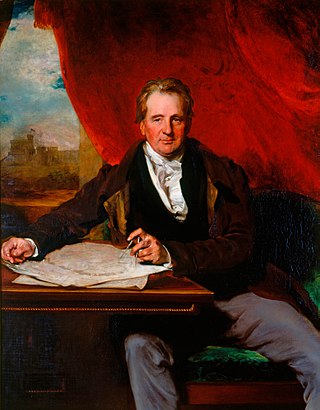
Frederick Augustus Porter Barnard was an American academic and educator who served as the 10th President of Columbia University. Born in Sheffield, Massachusetts, he graduated from Yale University in 1828 and served in a succession of academic appointments, including as Chancellor of the University of Mississippi from 1856 to 1861. He assumed office as President of Columbia University in 1864, where he presided over a series of improvements to the university until his death in 1889. He was also known as an author of academic texts.

Thomas Hopkins Gallaudet was an American educator. Along with Laurent Clerc and Mason Cogswell, he co-founded the first permanent institution for the education of the deaf in North America, and he became its first principal. When opened on April 15, 1817, it was called the "Connecticut Asylum for the Education and Instruction of Deaf and Dumb Persons," but it is now known as the American School for the Deaf.

Augustus Seymour Porter was a U.S. statesman from the state of Michigan.

John Haviland was an English-born American architect who was a major figure in American Neo-Classical architecture, and one of the most notable architects working from Philadelphia during the nineteenth century.
Port Pegasus, officially Port Pegasus / Pikihatiti, is at the southern end of Stewart Island in New Zealand. From the 1890s to the 1950s, Port Pegasus was the site of a small fishing community. There was also a small tin-mining boom in the area in the 1890s. Today, there is no settlement at Port Pegasus, but the location is frequented by tourists, fishermen, hunters, and divers.

Francis Maginn (1861–1918) was a Church of Ireland missionary who worked to improve living standards for the deaf community by promoting sign language and was one of the co-founders of the British Deaf Association.

Georges Washington Louis Gilbert de La Fayette was the son of Gilbert du Motier, Marquis de Lafayette, the French officer and hero of the American Revolution, and Adrienne de La Fayette. He was named in honor of George Washington, under whom his father served in the Revolutionary War.

From July 1824 to September 1825, the French Marquis de Lafayette, the last surviving major general of the American Revolutionary War, made a tour of the 24 states in the United States. He was received by the populace with a hero's welcome at many stops, and many honors and monuments were presented to commemorate and memorialize the visit.

William Leete Stone, known as Colonel Stone, was an influential journalist, publisher, author, and public official in New York City. His name also appears as "Leet".

Sir Jeffry Wyatville was an English architect and garden designer. Born Jeffry Wyatt into an established dynasty of architects, in 1824 he was allowed by King George IV to change his surname to Wyatville. He is mainly remembered for making alterations and extensions to Chatsworth House and Windsor Castle.

John Morin Scott was an American politician who served as a Whig Party member of the Pennsylvania House of Representatives from 1815 to 1816, and again in 1839. He served several terms in the Common and Select Councils for Philadelphia and as president of the Select Council for Philadelphia from 1826 to 1832.
Major-General Sir James Campbell was a Scottish army officer and colonial governor.

Albert Newsam was an American lithographer and painter. He was born deaf in Steubenville, Ohio, and orphaned as a small child. He displayed artistic talent at an early age, was brought to Philadelphia, Pennsylvania, and studied at the Pennsylvania School for the Deaf. He was an early practitioner of lithography in the United States and contributed numerous images to medical and sheet music books. His portrait work of prominent politicians, doctors, lawyers and businessmen raised the prominence of lithography in the United States.

The Lafayette Welcoming Parade of 1824 was a parade held in Philadelphia in September 1824 to welcome the arrival of the Marquis de Lafayette on the occasion of his visit to the United States for a sixteen-month tour.

Marquis de Lafayette was painted in 1825 by Samuel Morse. Mostly known for his invention of the electric telegraph, Morse was also an artist and a professor of painting and sculpture at the University of the City of New York.

The Stuyvesant family is a family of American politicians and landowners in New York City. The family is of Dutch origin and is descended from Peter Stuyvesant (1610–1672), who was born in Peperga, Friesland, Netherlands and served as the last Dutch Director-General of New Netherland.
Levi Strong Backus (1803–1868) is widely considered the first deaf editor of America, if not the world. He ran a newspaper called the Radii.
Reuben Haines III was a Quaker farmer, brewer, abolitionist, scientist, ornithologist, meteorologist, firefighter, philanthropist, and educational reformer from Philadelphia, Pennsylvania.
John Gerard Coster was a Dutch-American merchant who served as president of the Bank of the Manhattan Company.

Samuel Akerly was an American physician, superintendent of the New York Institution for the Deaf from 1821 to 1831, and co-founder and president of the New York Institute for the Education of the Blind from 1831 to 1842.
















